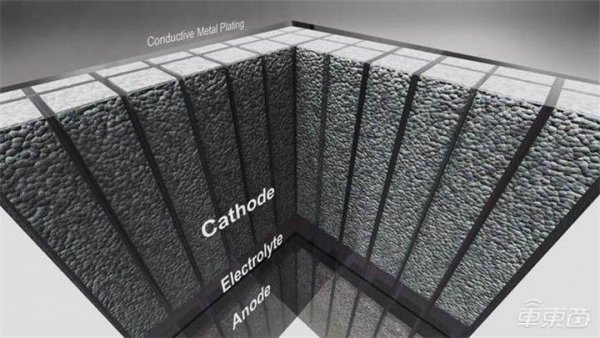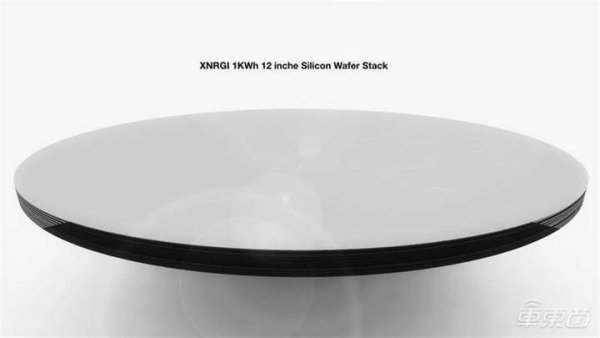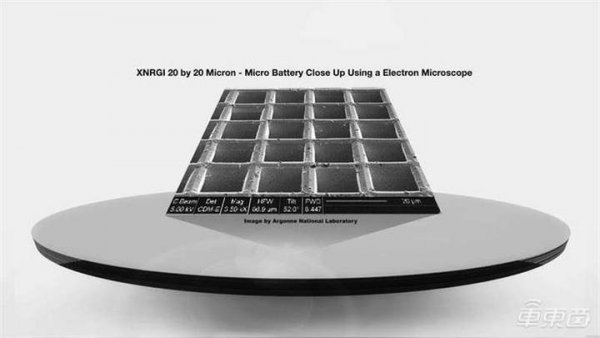According to DIGITAL TRENDS, recently, a company called XNRGI in Portland, Oregon, said that they have an easier power battery manufacturing scheme, and the new power battery Powerchip has higher energy density and faster Charging time.
This battery can reduce the probability of fire and explosion of the power battery, and can increase the service life of the power battery by three to five times. The battery can be charged to 80% within 15 minutes. This battery can increase the range of an electric car by 280%.
1. Powerchip battery can improve the cruising range of electric vehicles
Powerchip batteries use silicon wafers. The porous nature of the wafer increases the total surface area of ​​the battery by a factor of 70. Each hole is physically separated from its adjacent holes. This helps eliminate internal short circuits and prolongs the life of the battery.
"Each small hole is a very small battery, and one of the small batteries will not affect other batteries after it breaks, so that it can prevent overheating and explosion." XNRGI CEO Chris D'Couto introduced.
The porous silicon crystal makes the surface area of ​​the positive electrode of the Powerchip battery more than 70 times that of the lithium ion battery, and all use pure lithium metal. More surface area will have more energy density, and the energy density of the positive electrode of the Powerchip battery is about 10 times that of the existing positive electrode of the lithium ion battery.
After the previous power battery experienced repeated charge and discharge, chemical substances will form on its positive electrode surface. This material that looks like stalactites is called "dendrite", and the dendrite will break through the physical separator between the positive electrode and the negative electrode, resulting in a short circuit of the battery, so the rechargeable battery will deteriorate over time.

â–² Lithium ions carry elements to form plaques
Lithium ions also carry other elements that form plaques on the separator between the positive and negative electrodes of the battery to block the battery and reduce performance. Adding a non-conductive coating on the surface of silicon crystals can resist the formation of dendrites and extend battery life. The elements carried by lithium ions will not stick to the surface layer, and it is not easy to form dendrites or plaques.
D'Couto believes that the service life of XNRGI Powerchip batteries will be three to five times longer than today's lithium-ion batteries.
The surface area of ​​the Powerchip battery is larger than that of the traditional lithium battery, which can discharge and charge faster, which can improve the power of the electric vehicle, and it is more convenient to use the fast charge.
According to D'Couto, the positive electrode of the Powerchip battery can reach 80% in 15 minutes, and the most common charging mode for electric vehicle charging from 10% to 90% can also be completed in 15 minutes. In addition to fast charging, Powerchip batteries can increase the range of electric vehicles by 280%. The current range of electric vehicles with a range of 400 kilometers will use this power battery and the range will reach 1127 kilometers.
Powerchip batteries will be lighter than current power batteries. Car manufacturers can make lighter and more efficient electric vehicles, or they can put more batteries in electric vehicles to ensure a longer range while ensuring the weight of the car.
Second, silicon wafer batteries are lower in cost than lithium-ion batteries
The composition of Powerchip batteries is different from that of traditional lithium-ion batteries. Traditional lithium-ion batteries use graphite paste on two-dimensional conductors, while Powerchip batteries use lithium metal in three-dimensional porous silicon wafers.

â–² Silicone crystal
XNRGI CEO Chris D'Couto said: "We use silicon wafers for battery manufacturing, and apply the semiconductor industry to power battery manufacturing. Silicon wafers can be easily purchased, so we have not invested in this area. R & D. "
Powerchip batteries are made of outdated and thick silicon wafers, which are mass-produced worldwide and are not expensive.
The mature semiconductor process is the advantage of using silicon wafers to manufacture power batteries. Powerchip batteries use perforated silicon wafers. There are more than 160 million micro-holes in 12-inch (about 30 cm) silicon wafers, and one side of the wafer is coated with a non-conductive coating. Layer, the other side is coated with conductive metal to carry current.
XNRGI CEO Chris D'Couto said: "The metal coating and insulating coating technologies come from the chip industry, and we have not invented anything in the process."
The silicon chip technology of Powerchip battery is on the positive side of the battery. When the battery is fully charged, the positive electrode is like a barrel of electrons. When the battery is discharged, the electrons flow through the circuit to the negative electrode. While charging, the positive electrode is filled again.

â–² Silicone crystal
Some research institutes believe that silicon-made batteries will swell when charging, and in the long run will also reduce battery safety. XNRGI said that their technology allows each micro-battery to have enough space between the electrodes, and at the same time it can maintain a low enough charge to prevent the battery from expanding.
XNRGI said that it has been researching and developing related patent technology for 15 years. It has a large number of patents directly related to Powerchip battery technology. They have also applied for many other patents. The company has also received research funding from the US Department of Energy. With sufficient funds and patent protection, XNRGI will trigger a power battery revolution.
Currently, XNRGI is working with various battery-using companies, including small consumer electronics companies, car manufacturers, and grid-level utilities. The company plans to complete product promotion and licensing agreements within the next two to five years.
"We expect to use Powerchip batteries for mobile products such as motorcycles, scooters, drones, and robots in 2020, to test Powerchip batteries for electric vehicles by 2022 or 2023, and to use them in large scale in 2024 . "D'Couto predicted.
Scientists around the world are researching better battery technology. In the future, fast charging, remote charging and other technologies will change the electric vehicle industry. (Author: Guo Zhihao)
Shandong Yiyuantong International Trade Co., Ltd. , https://www.yyttrade.com